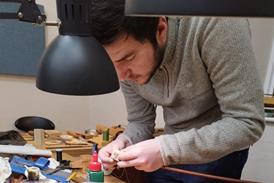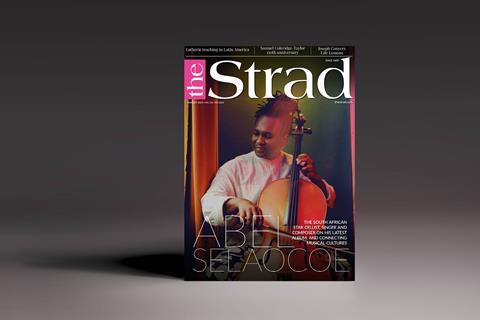- More from navigation items
- Home
- News
- For Subscribers
- Student Hub
- Playing Hub
- Podcast
- Lutherie
- Magazine
- Magazine archive
- Whether you're a player, maker, teacher or enthusiast, you'll find ideas and inspiration from leading artists, teachers and luthiers in our archive which features every issue published since January 2010 - available exclusively to subscribers. View the archive.
- Jobs
- Shop
- Directory
- Contact us
- Subscribe
- School Subscription
- Competitions
- Reviews
- Debate
- Artists
- Accessories
Girolamo Amati II violin 1671: Last but not least

Girolamo Amati II was the final violin maker of the illustrious Amati dynasty – and possibly the most overlooked. Barbara Meyer examines a 1671 violin from his early career and contrasts it with another instrument he made 48 years later
Discover more lutherie articles here
Read more premium content for subscribers here
Click here to purchase a poster of the 1671 Girolamo Amati II violin
This article appeared in the July 2022 issue of The Strad
For almost a century, violin making in Cremona was dominated by the Amati family. The parish of Santi Faustino e Giovita, where Andrea Amati set up his workshop in 1538, became a mecca for customers seeking the best violins and violas, a tradition continued by Andrea’s sons Antonio and Girolamo, and especially by his grandson Nicolò. Even despite the competition from other talented Cremonese makers, the workshop of Nicolò Amati reigned supreme, as he busied himself training other luthiers while crafting some of the finest instruments the world had yet seen. To an outsider, it must have seemed as if the legacy of the Amati family would continue for decades if not centuries.
Life, however, had not been without significant challenges for the Amatis. Years of famine were followed by a plague in 1630 that swept across parts of Europe, decimating 60 per cent of Cremona’s population. Nicolò Amati was just 34 years old when he lost his parents, two sisters and other family members to the plague. The gifted and exceptionally trained master persevered, continuing to work at the family workshop established by his grandfather. This hub of Cremonese violin making was in an area with an abundance of artisans and merchants. In 1645 Nicolò married Lucrezia Pagliari, their wedding officially witnessed by one of their live-in workshop apprentices, Andrea Guarneri – who was to become an eminent Cremonese violin maker himself…
Already subscribed? Please sign in
Subscribe to continue reading…
We’re delighted that you are enjoying our website. For a limited period, you can try an online subscription to The Strad completely free of charge.
* Issues and supplements are available as both print and digital editions. Online subscribers will only receive access to the digital versions.



























